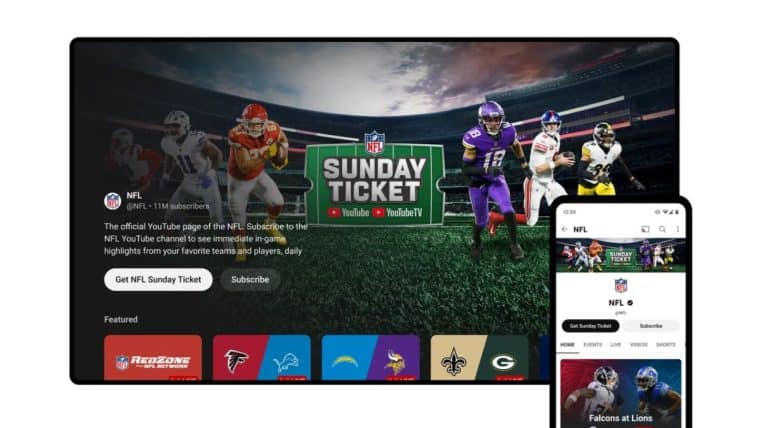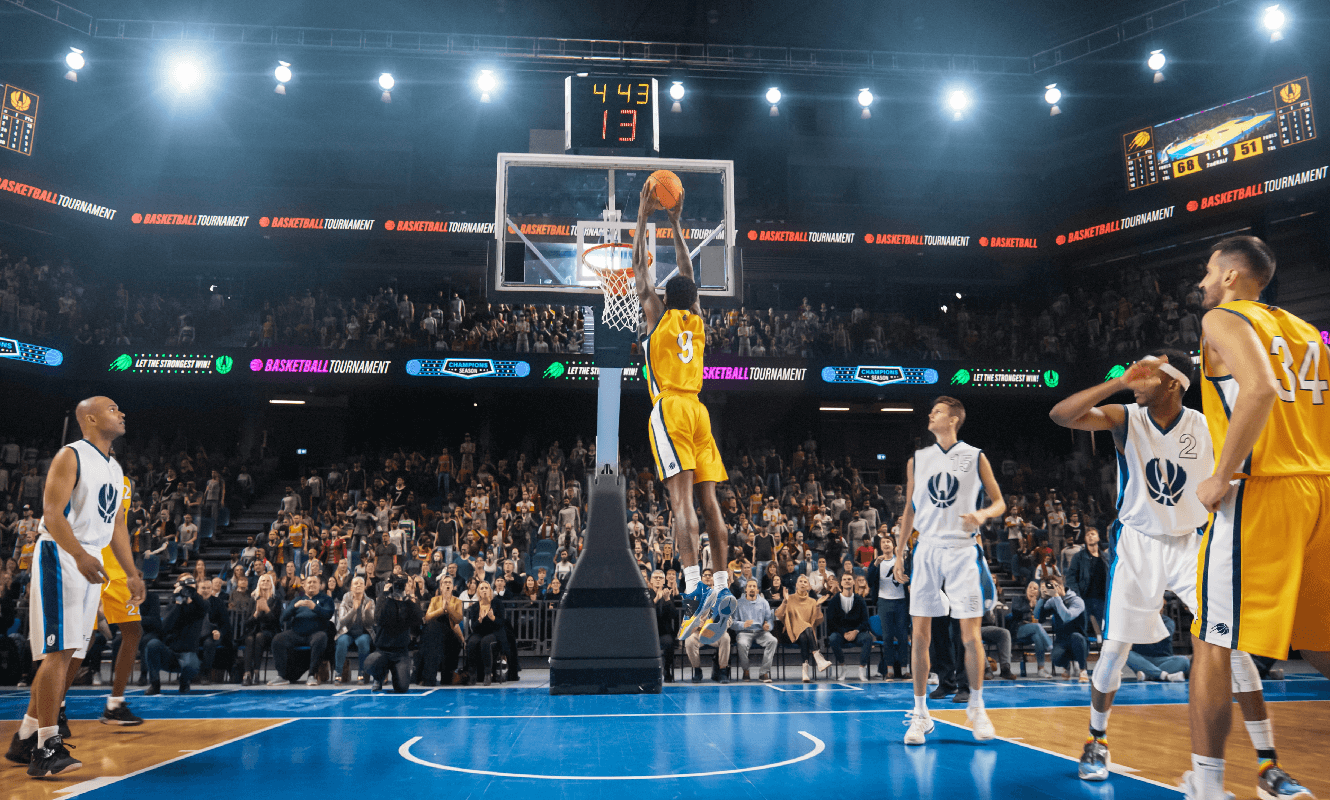Envision a world where every sports event you desire to watch is easily accessible, without the need for a traditional cable subscription or 7 different streaming services. This vision hasn’t been realized yet but it’s close with the upcoming launch of an innovative sports streaming service, promising to transform our sports viewing experience. The announcement signals the death knell of cable as live sports is its last (meaningful) bastion of viewers.
Yet, as the distinction between old-school cable and streaming services starts to fade, we’re left wondering: Are we truly advancing, or are we merely exchanging one limitation for another?
Let’s delve into this contradiction, examining both the transformative promise and the unforeseen challenges of this new era in sports broadcasting.
The New Sports Streaming Platform
ESPN, Fox, and Warner Bros. Discovery are teaming up to start a new sports streaming service, changing the way fans will watch major sports like the NFL, NBA, and MLB.
Set to start in the fall, this service will make it easy for fans to watch sports anytime they want, offering a new choice that challenges the traditional cable TV model.
This new service, which hasn’t been named yet, will bring together sports content from these three big companies. It will be available both as its own app and as part of packages with other services like Max, Hulu, and Disney+, aiming to give subscribers a lot of sports content.
This partnership is hugely impactful for the sports broadcasting industry, since it will give an alternative for “cord-cutters” who have moved away from traditional pay-TV. It’s designed to attract sports fans who prefer streaming by offering a wide range of sports content in one place.
The initiative is a clear response to the shifting dynamics of media consumption, where viewers demand greater flexibility, choice, and access to content without the need for a cable subscription.
The Rise of Streaming and the Fall of Cable
As this new service is introduced, it’s part of a bigger change in the media world. The increase in streaming services is leading to fewer people using traditional cable TV. This shift is driven by viewers wanting a more personalized and cheaper way to watch TV. Streaming lets people watch what they want, when they want, which is why it’s becoming more popular.
For cable subscribers, the challenges have become increasingly pronounced, especially when it comes to accessing sports content. Traditionally, live sports were cited as the primary reason why many viewers kept paying for cable. However, cable companies bundle extensive channel packages just to access a few sports channels, leaving many feeling trapped and frustrated by the lack of flexibility and the expense of paying for this bundle.
Getting sports on cable is also further complicated by exclusive broadcasting rights and blackout rules, making it difficult for fans to follow their favorite teams without a comprehensive—and expensive—cable package. This has been a significant pain point for sports fans, who have to work through a labyrinth of channels and subscriptions to watch live games, often leading to a poor viewing experience.
With streaming services starting to show live sports, cable’s control over sports broadcasting is weakening. These services offer a new way to watch sports that aligns with what viewers want: flexibility, choice, and value. The move to streaming isn’t just about leaving cable behind; it’s about changing how sports are watched altogether, promising a future where fans can watch sports how they want, free from the limits of cable TV.
Is the New Era of Streaming Live Sports Any Better?
But live sports broadcasting is far from perfect on these streaming services. Often the main leagues like the NBA sell their broadcasting rights to various streaming services or cable packages, meaning that you need multiple, often extremely expensive services just to watch all of your team’s games.
For example, imagine you are a Detroit Lions and Pistons fan living in the Detroit area and you have YouTube TV to watch NFL and NBA games. You have to pay $72.99 per month for the basic YouTube TV subscription but that doesn’t even get you most NBA or NFL games. So, you need to get the $14.99 per month NBA pass and the $174 per season NFL Ticket (which doesn’t even include all games).

Somehow, that won’t get you all of the Pistons games because the NBA sold exclusive local broadcasting rights to Bally Sports, a different channel not included in YouTube TV. So you decide to get a $74.99 per month FuboTV subscription (that includes the Bally Sports channel) to catch the Pistons’ home games. Finally you can watch all of your teams’ games for the low low price of just $177.5 per month (~$2,130 per year), more than double the average price of cable packages.
Challenges and Considerations
The announcement of the new sports streaming platform has triggered a variety of reactions from viewers. Many are excited about easier access to sports content, but there are also notable concerns and doubts that need attention.
A key worry is that this partnership might lead to a monopoly in sports broadcasting. Bringing major sports content together on one platform could reduce competition, which might result in higher prices and fewer choices for viewers over time. This potential dominance raises concerns about how fair and varied sports broadcasting will be.
However, there are consumer benefits to monopolies sometimes. The price for one streaming platform, even if it can choose its own pricing, might still be lower than the current insane costs that fans incur just to watch all of their teams’ games on various platforms and cable packages.
Another problem is content exclusivity. Having exclusive rights to certain sports events means fans may feel compelled to subscribe to this service to keep up with their favorite teams. This could push aside other services and restrict the choices available to viewers, making it difficult for them to access sports content without signing up for this new offering. This is already a problem to some degree as we already explained but it could become even worse.
The proliferation of streaming services has also complicated subscription management for many people. Introducing yet another service could worsen this problem, causing subscription overload.
Interestingly, the current situation seems to be repeating history, echoing the very cable packages streaming services aimed to replace.
Streaming initially attracted viewers with its promise of choice and flexibility, offering the chance to pay only for what one really wanted to watch. However, as these platforms grow, they are starting to combine different types of content into bundles, similar to old cable packages.
The Bottom Line
As we approach the dawn of this new age in sports broadcasting, it’s evident that the emerging ESPN, Fox, and Warner Bros. Discovery streaming service introduces an exciting prospect for sports enthusiasts.
However, it also calls for an evaluation of how this development will shape media consumption in the future. Will it genuinely free us from at least some of cable’s limitations, or merely repackage familiar restrictions in a modern, digital format?
Only time will tell, but one thing is clear: the way we watch sports is transforming, which means our viewing habits must adapt.
